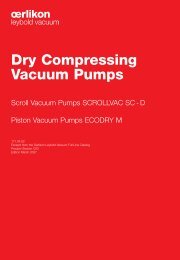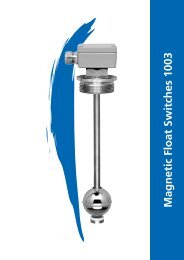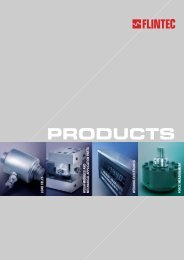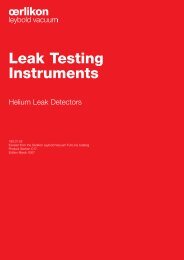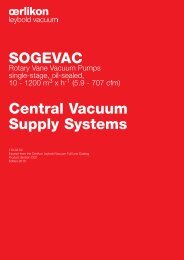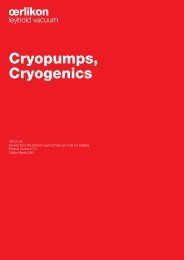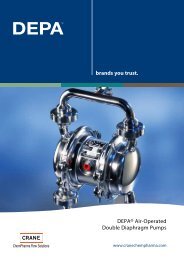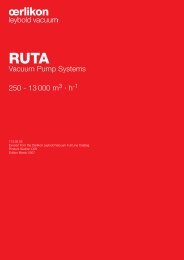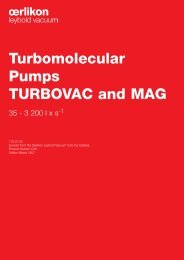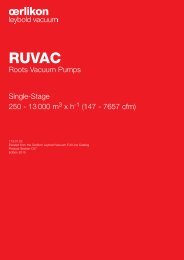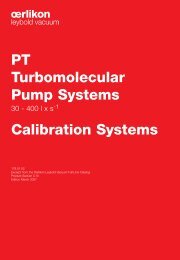UNIVEX - Vacuum Products Canada Inc.
UNIVEX - Vacuum Products Canada Inc.
UNIVEX - Vacuum Products Canada Inc.
You also want an ePaper? Increase the reach of your titles
YUMPU automatically turns print PDFs into web optimized ePapers that Google loves.
<strong>UNIVEX</strong> 450 for Dactyloscopy (VMD)<br />
<strong>UNIVEX</strong> 450 for dactyloscopy<br />
Dactyloscopy is the science of fingerprint<br />
identification. Oerlikon Leybold<br />
<strong>Vacuum</strong> has designed a system that<br />
uses a process known in the forensics<br />
world as <strong>Vacuum</strong> Metal Deposition<br />
(VMD), for developing fingerprints.<br />
VMD is a well established forensic tool<br />
for the development of latent fingerprints.<br />
Latent prints are formed by<br />
perspiration or grease from the skin<br />
surface which is left on a different<br />
surface. They are not visible to the<br />
naked eye and must therefore be<br />
“developed” before they can be seen.<br />
The process requires a piece of evidence<br />
suspected of having these<br />
latent prints to be placed inside a<br />
vacuum chamber. After pumping the<br />
chamber down to a relatively low pressure<br />
(10 -5 mbar (Torr)), a monolayer of<br />
gold is then evaporated onto the evidence.<br />
These gold atoms will then be<br />
absorbed by the greasy ridges that<br />
make up the print but will remain behind<br />
in the valleys between the ridges.<br />
Next, a second metal layer of zinc is<br />
deposited. Zinc has a unique property<br />
in that it only adheres to other metals<br />
such as gold left behind in the valleys.<br />
The end result will be a very distinct<br />
negative image of a fingerprint. The<br />
image is photographed and reversed<br />
for final identification.<br />
Benefits of this method<br />
- Simple thermal deposition process<br />
with proven results<br />
- VMD has been shown to detect<br />
latent prints even after other<br />
methods have been tried and failed<br />
(e.g. cyanoacrylate or fuming)<br />
- Large surface areas (up to<br />
80 x 40 cm) can be coated<br />
- Process time can be as little as<br />
10 minutes depending on the material<br />
makeup of the evidence<br />
- Good contrast on multicolour surfaces<br />
- Deposition process does not damage<br />
the evidence. Zinc can be removed<br />
using regular household vinegar<br />
C19 20<br />
Oerlikon Leybold <strong>Vacuum</strong> Full Line Catalog





